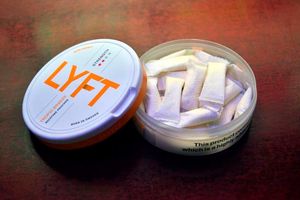Experts want smokeless tobacco products regulated

Smoking a pipe or chewing tobacco can increase cancer risk.
What you need to know:
- Smokeless tobacco use is an emerging public health challenge with epidemiologic and laboratory evidence concluding that it causes oral cancer, oesophageal cancer, and pancreatic cancer in humans.
- The products can also increase risks for early delivery and stillbirth when used during pregnancy, cause nicotine poisoning in children and may increase the risk for death from heart disease and stroke.
Health Cabinet Secretary Susan Nakhumicha has been urged to push for the amendment of Tobacco Act so that it addresses emerging products such as smokeless tobacco.
Dr Naomi Shaban, the chair of Tobacco Control Board, echoed sentiments of hundreds of stakeholders advocating for tailored health graphic warnings for different tobacco products.
Speaking in Mombasa during a public participation convened by Health ministry and the board to discuss graphic health warnings on tobacco products, she emphasised the need for amendments to the Tobacco Act to address chewed, snuffed, and dissolvable tobacco products.
As part of providing the public with health warnings on tobacco products, stakeholders called for distinct graphic warnings for newer products such as smokeless tobacco and nicotine pouches, differing from traditional carcinogenic tobacco warnings.
Acknowledging the deficiencies within the existing legislation, the government, through the Tobacco Control Health Board, agreed on the need for amendments to effectively regulate smokeless tobacco products and bridge existing gaps within the Tobacco Act.
“The use of smokeless tobacco products has increased sharply among young people in the country as they can be chewed, snorted or placed inside the oral cavity,” Dr Shaban highlighted.
According to the World Health Organization (WHO), an estimated 8,100 Kenyans die of tobacco-related diseases every year. Even though consumption of tobacco has been declining globally, data from the global health regulator shows that 13 per cent of Kenyan adults still use the stimulant.
The African Journal of Alcohol and Drug Use highlights that 14.5 per cent of secondary school students and six per cent of primary school pupils in Kenya have used tobacco in their lifetime.
Mary Atieno, a mother of three in Nairobi, agrees with the findings from the peer reviewed journal.
“You find our children using smokeless tobacco products you have never seen in your entire life and wonder how they got here or whether the Kenya Bureau of standards knows that the products are in the country.”
This is why industry players emphasise the urgency for the government to explore safer alternatives, including harm-reduction products supported by scientific evidence demonstrating their reduced harm potential.
“Smokeless tobacco use is an emerging public health challenge with epidemiologic and laboratory evidence concluding that it causes oral cancer, oesophageal cancer, and pancreatic cancer in humans,” the United Nations Population Fund notes while agreeing with the Central Intelligence Agency (CIA), which states that more than 30 carcinogens have been identified in smokeless tobacco products.
The products can also increase risks for early delivery and stillbirth when used during pregnancy, cause nicotine poisoning in children and may increase the risk for death from heart disease and stroke.
According to the CIA, there are chemicals found in tobacco that can also cause cancer such as a radioactive element (polonium-210) found in tobacco fertiliser, chemicals formed when tobacco is cured with heat (polynuclear aromatic hydrocarbons—also known as polycyclic aromatic hydrocarbons) and harmful metals which include arsenic, beryllium, cadmium, chromium, cobalt, lead, nickel and mercury.
The most harmful chemicals are tobacco-specific nitrosamines, which form during the growing, curing, fermenting and aging of tobacco.
The amount of these chemicals varies by product.
“Further, smokeless tobacco products contain nicotine and users demonstrate signs of dependence similar to those of cigarette smokers,” CIA explains.
The American Cancer Society points out that dissolvable forms of smokeless tobacco come in different shapes and sizes such as tobacco lozenges, orbs, pellets, thin strips (like melt-away breath strips), and toothpick-sized sticks.
Some of these contain sweeteners or flavouring and look a lot like candy.
“Heated tobacco products, sometimes called “heat-not-burn” products, typically use an electronic heating element, which heats specially-designed sticks, plugs, or capsules containing tobacco,” the cancer experts say.
The heat then releases nicotine (and other chemicals) that can be inhaled into the lungs, but the tobacco doesn’t get hot enough to burn.
“These devices are not the same as e-cigarettes, “they caution.
The final public participation for the lower eastern region, including Machakos, Kajiado, Kitui, and Makueni will be done soon.





